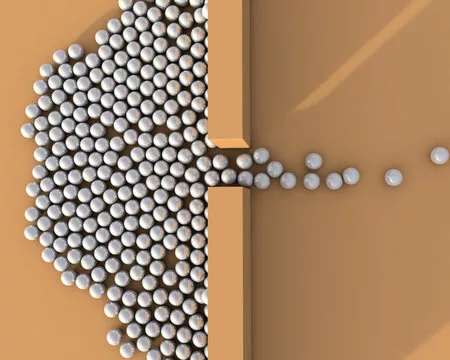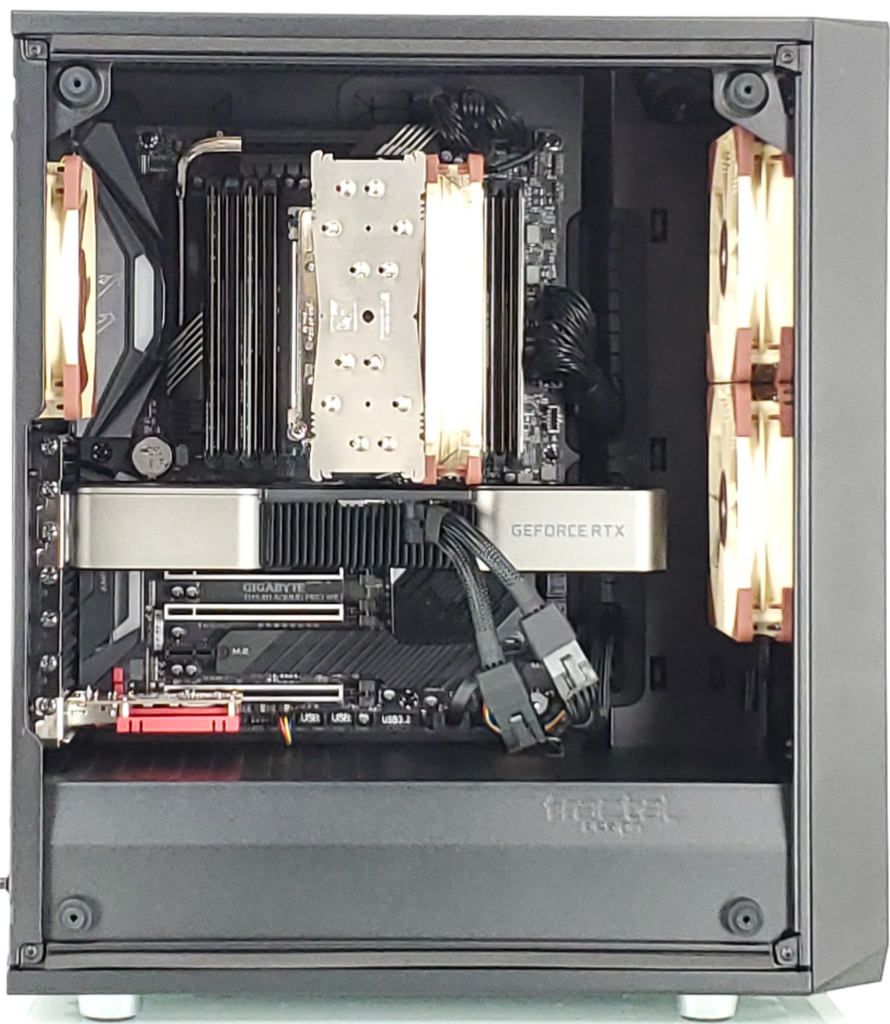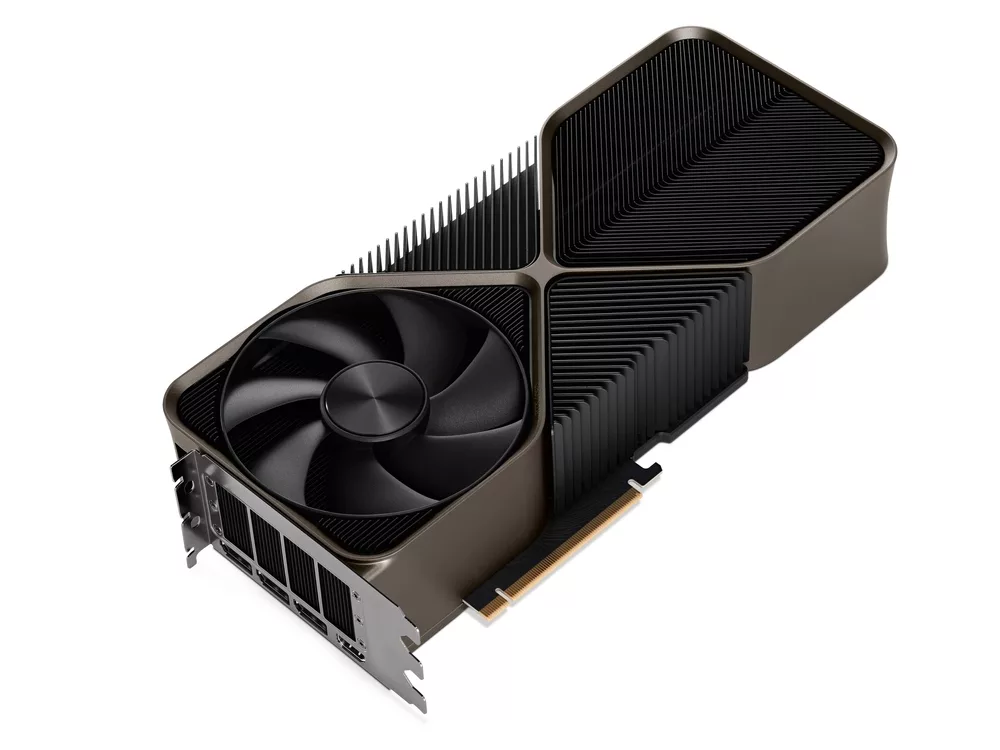Table of Contents
Introduction
With the (relatively) recent release and steady availability of the 40 series card we are all asking ourselves:
“Should I upgrade my GPU”
Basically every one of us 🙂
This greatly depends on your use case and workflow. Check out our Testing Articles to see if your workflow can benefit from a GPU step up. Additionally, if you are switching from a 10 or 20 series card then the chances it will help with your workflow are high but there are other things to consider such as power draw and fit.
Primary reason to upgrade is workflow performance. If our articles indicate a greater than 10% performance bump then it might be worthwhile to pickup a new GPU. If you need to upgrade more than just the GPU, it may not be worth it. Check out the Should I Upgrade Article before proceeding though.
Benefits
Upgrading a GPU to the 40 series has several benefits and impacts that can significantly improve the performance and user experience of your Puget build.
Benefits:
- Increased Performance: Upgrading to a 40 series GPU typically results in improved graphics performance, faster frame rates, and more fluid gameplay.
- Enhanced Visuals: The 40 series GPUs have advanced graphics technologies such as real-time ray tracing and AI-accelerated denoising, which can significantly enhance the visual quality of games and other applications.
- Improved Energy Efficiency: The 40 series GPUs are designed with advanced power management features that help to reduce power consumption, which can lead to improved energy efficiency and longer battery life for laptops.
- Reasonable Cost and Availability: In a huge change from the past two years, prices are low and high-end PC graphics boards are readily available.
Impacts:
- Cost: Upgrading to a 40 series GPU can be expensive in general, particularly if you are upgrading to a high-end model.
- System Requirements: Before upgrading to a 40 series GPU, it is important to ensure that your system meets the necessary hardware requirements. For example, some models may require a high-wattage power supply and a compatible motherboard.
- Compatibility: Upgrading to a 40 series GPU may require updating your drivers or reinstalling your operating system to ensure compatibility.
Graphics Bottleneck
A GPU (Graphics Processing Unit) bottleneck is a scenario where the GPU is not performing at its full potential and is limiting the overall performance of a system. This can occur when the GPU is unable to keep up with the demands of a task and as a result, slows down the entire workflow.
A GPU bottleneck can have a significant impact on a workflow by slowing down the processing time, causing choppy graphics and decreased frame rates, and negatively affecting the overall user experience. When a GPU bottleneck occurs, the user may experience stuttering, lagging, or dropped frames, making it difficult to complete tasks efficiently.

Additionally, a GPU bottleneck can also impact the performance of other components such as the CPU and RAM, as they may be forced to wait for the GPU to catch up. This can lead to decreased productivity, longer processing times, and reduced system efficiency.
What to Consider Before Upgrading Your Graphics Card
Here are a few considerations before upgrading your GPU. It’s often better to check other parts of your system hardware before you decide your GPU has run its course or you need to upgrade to a new GPU.
1. Make Sure the system Has Enough Power
If you’re going to upgrade your graphics card, make sure that it will last you at least a few years before you have to upgrade again. For this reason, try to get the best GPU currently available.
Don’t go with older models, if possible. Chat with your Consultant for advice based on your workflow.
If you’re going for a second-hand GPU, try to figure out how the previous owner used it before purchasing. For example, were they just using the GPU for gaming, or was it part of a cryptocurrency mining rig? Or better yet, just don’t purchase second hand!
2. Make sure it fits
It’s important to check whether the GPU you’re considering buying will fit into your current computer case along with the other components you have, especially as GPUs continue to grow in size.

3. Make sure you can power it
Because your GPU is one of the most demanding parts of your computer, make sure that your power supply (PSU) is compatible before buying. For example, Nvidia’s RTX 4080 has a maximum power draw of around 340W, which means you’ll need a PSU that can accommodate the GPU plus your other hardware (the CPU, motherboard, RAM, sound card, and other peripherals).
You’ll also have to upgrade your power supply if it doesn’t. A power supply usually costs less than your graphics card, so there’s no need to stress out about pricing—but there are some things to watch out for when buying a new PSU such as size/power output and potential compatibility issues.
Conclusion
Upgrading to a 40 series GPU can provide improved performance, enhanced visuals, and increased energy efficiency. When upgrading, it is important to consider your system requirements, performance needs, and budget to ensure you get the best value for your money. Additionally, compatibility and system requirements should be taken into consideration before making the upgrade. Making an informed decision by considering these factors can result in a successful and satisfying GPU upgrade. If you are ever unsure or if you have any questions about the process please reach out to your Puget Systems contact, we are here to help!
Need help with your Puget Systems PC?
If something is wrong with your Puget Systems PC, we are readily accessible, and our support team comes from a wide range of technological backgrounds to better assist you!
Looking for more support guides?
If you are looking for a solution to a problem you are having with your PC, we also have a number of other support guides that may be able to assist you with other issues.
